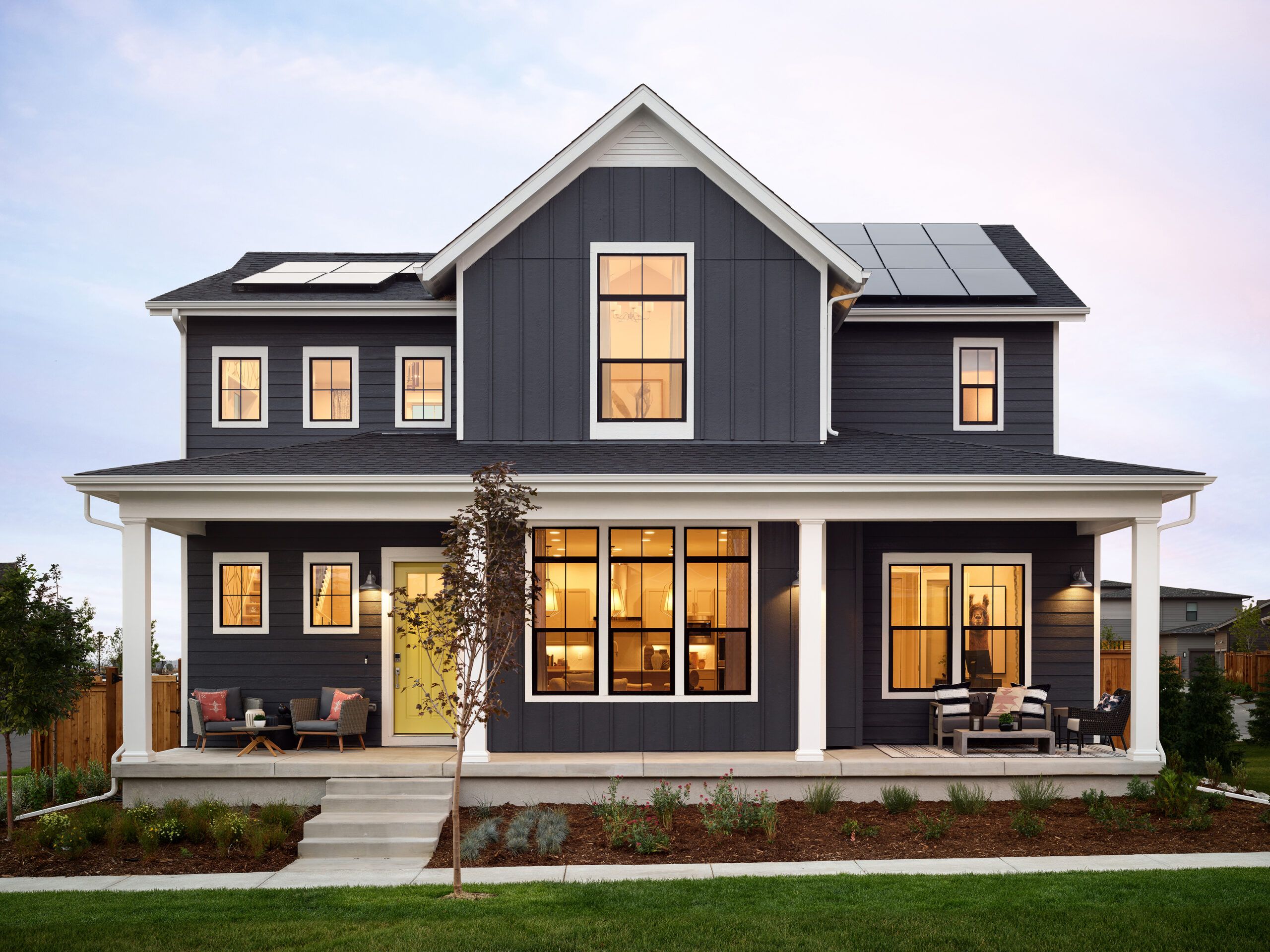Whether you’re building a new home or renovating an existing one, few improvements boost your property’s curb appeal quite as dramatically as new siding. However, with so many materials, styles, and options available, choosing the right siding for your home can be a challenge. To help you navigate this important decision, we’ve compiled some of the latest trends in exterior design that can transform your home’s appearance.
Traditional and Timeless Exterior Looks
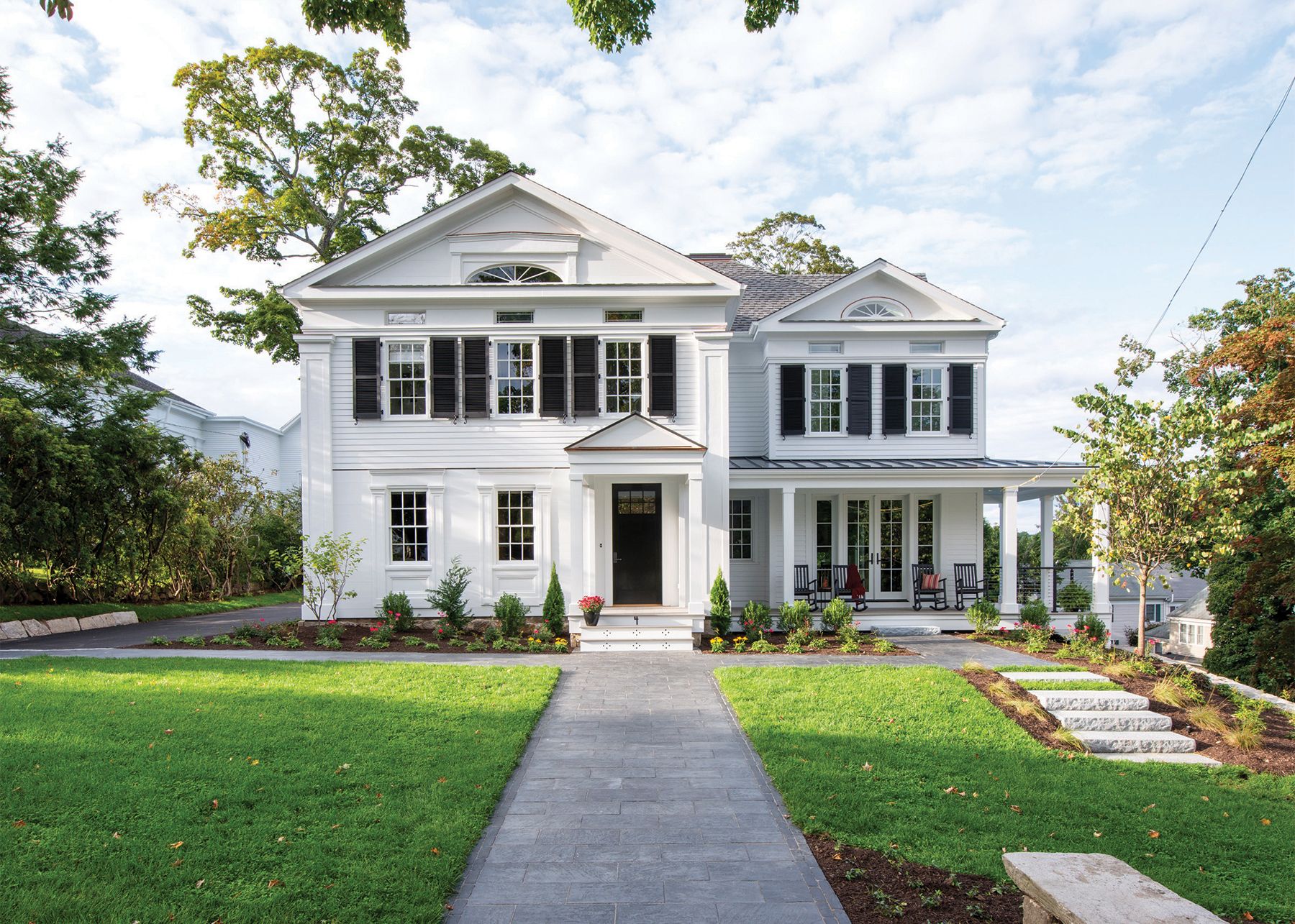
Lap siding has been a staple in residential architecture for centuries, both in the U.S. and Europe. Characterized by long, narrow boards installed horizontally in an overlapping pattern, it remains the most popular siding style today. Its enduring appeal lies in its versatility and classic look.
For homes ranging from modern to historical, engineered wood siding products offer a wide array of designs without compromising durability. Some manufacturers produce siding in 16-foot lengths, which can result in fewer seams than traditional 12-foot siding. This not only creates a cleaner look but can also lead to faster, more cost-effective installation. Additionally, the rise of eco-friendly options has led to the use of sustainable materials that mimic traditional wood, reducing environmental impact without sacrificing aesthetics.
Color Contrasts Siding
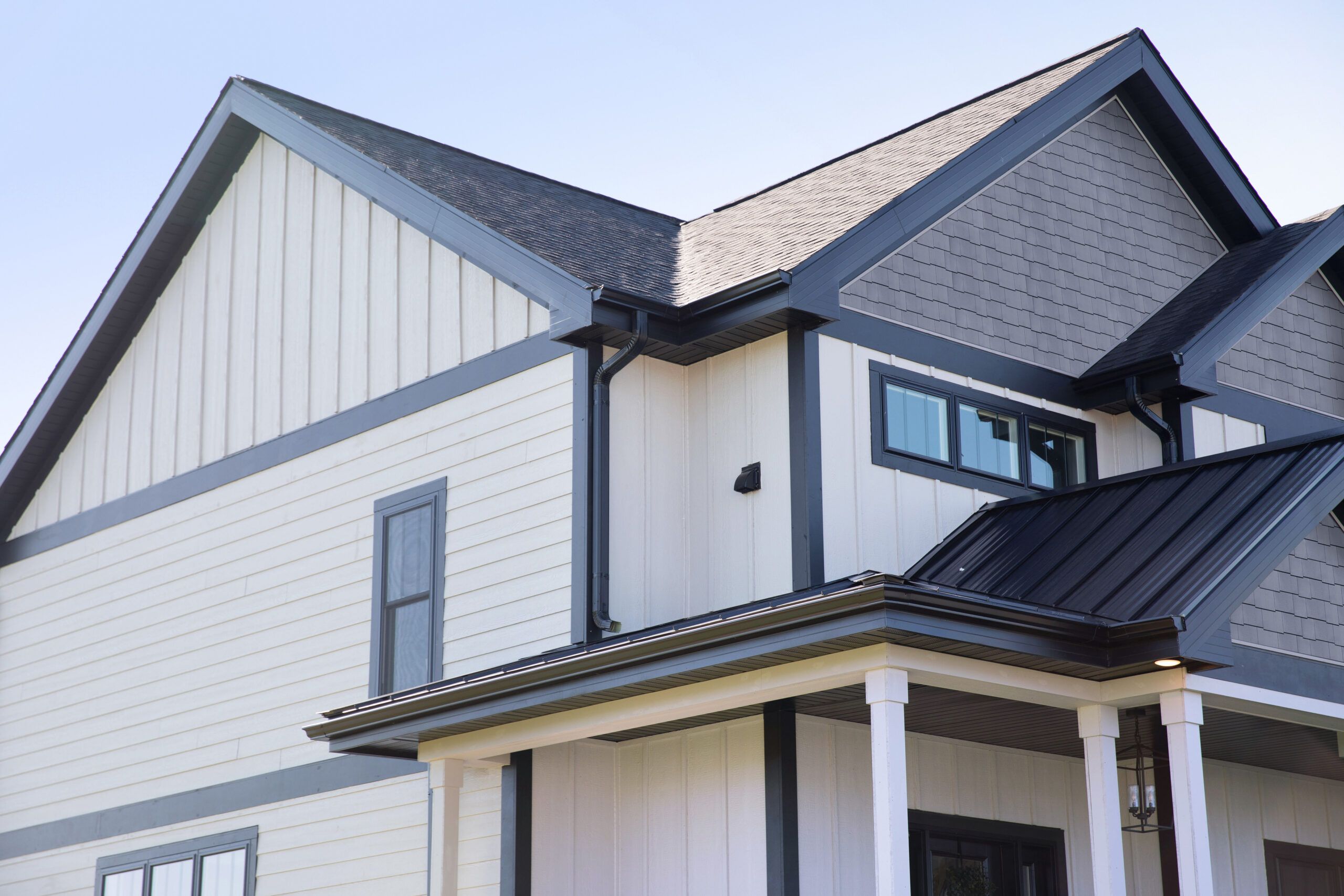
While subtle color palettes dominated home exteriors for years, homeowners are now embracing more dynamic color combinations to make a statement. This trend involves using contrasting colors and textures to create visual interest and highlight architectural features.
Many siding manufacturers now offer prefinished options in a variety of colors, allowing homeowners to choose from a wide spectrum of hues. From bold blues and festive reds to neutral grays and crisp whites, there’s a color to suit every style preference. These factory-finished products often come with advanced paint technology that provides long-lasting color retention and durability. Moreover, the application of innovative, UV-resistant coatings ensures that colors remain vibrant and resist fading even under harsh weather conditions.
Pro tip: Upload a photo of your home to the LP SmartSide Home Visualizer and explore different color options.
Trendy Trim Exteriors
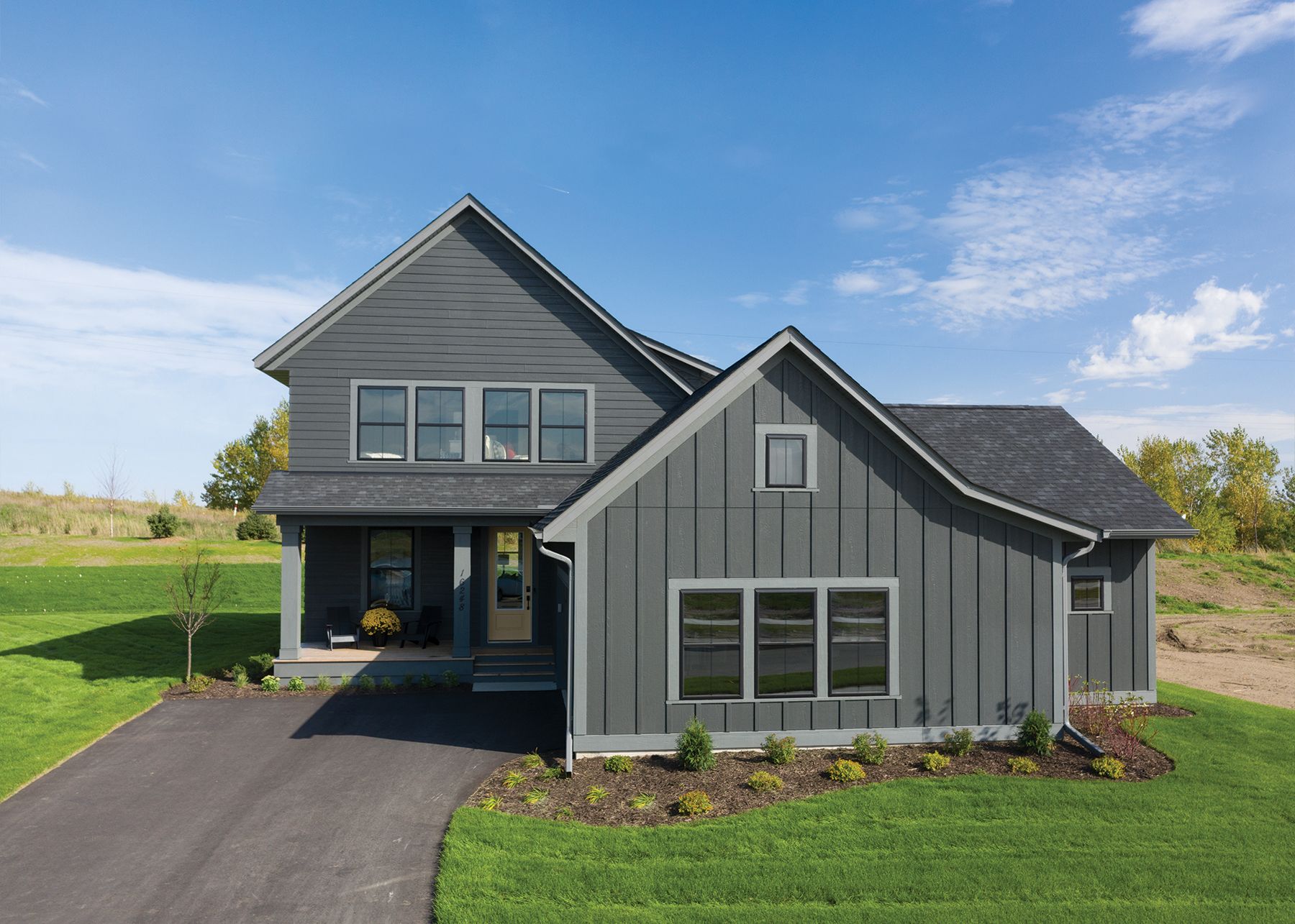
Trim plays a crucial role in enhancing a home’s exterior design. It’s an excellent tool for highlighting architectural features and creating eye-catching contrast. These are some of the most notable current trends in trim:
- Wide trim around windows and doors for a bold, dramatic look
- Contrasting trim colors to make architectural details pop
- Decorative trim elements like corbels or brackets to add character
In addition to trim, other coordinating elements, such as shutters, a colorful front door, and unique garage doors, can further enhance your home’s curb appeal and personality. Utilizing decorative trim can also create a sense of depth and shadow play, elevating the complexity and intrigue of your home’s facade.
Landscape Awareness
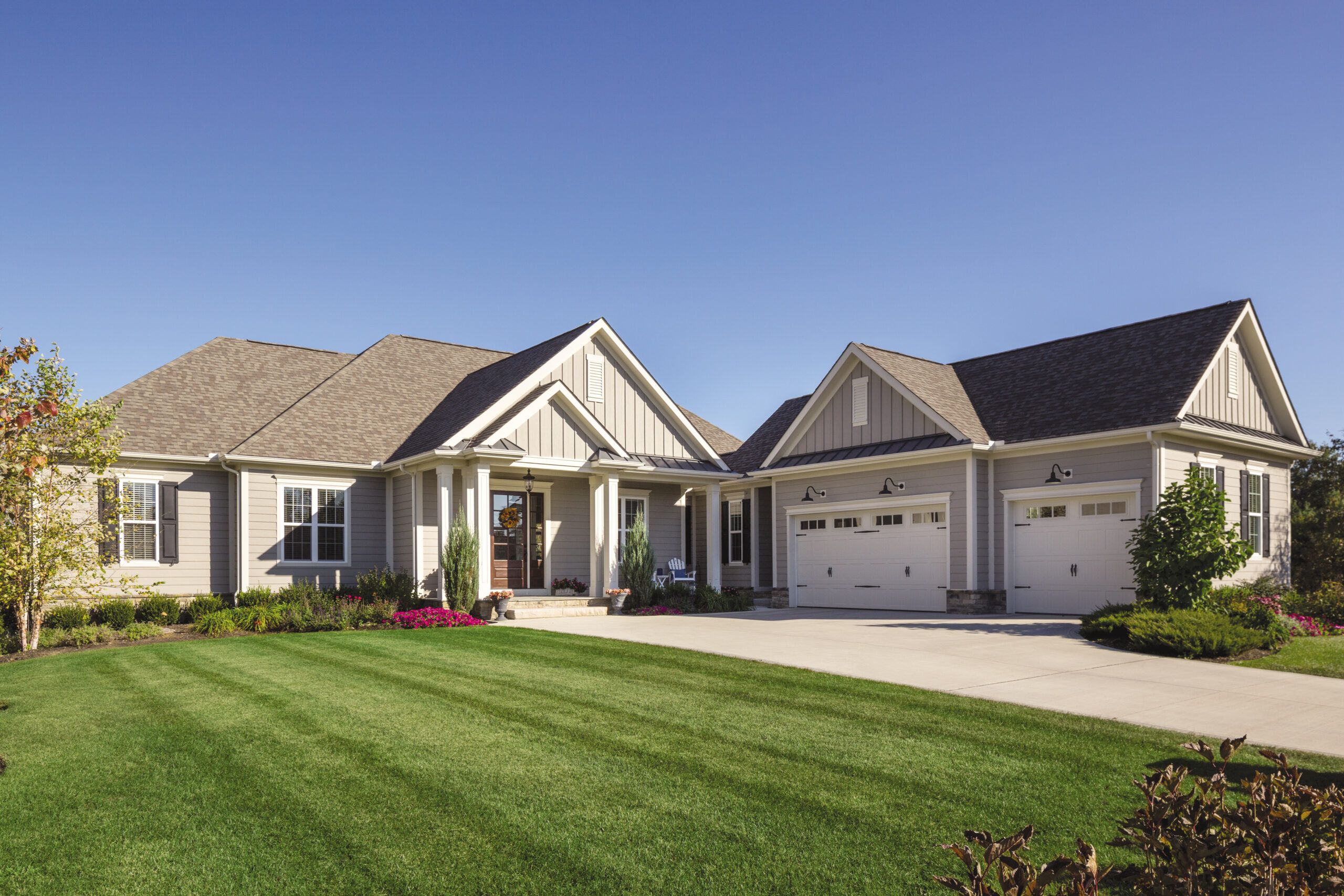
When selecting siding colors and styles, smart homeowners consider the broader context of their property, including:
- Neighboring homes: While you don’t need to match exactly, coordinating colors can create a sense of harmony in the neighborhood.
- Natural surroundings: Choose colors that complement the landscape and natural features of your property.
- Hardscaping elements: Ensure that your siding choices blend well with existing hardscaping features like driveways, walkways, and retaining walls.
By bearing these factors in mind, you can create a more unified and harmonious exterior that enhances your home and its surroundings. This holistic approach can also increase your property’s overall value, making it more appealing to potential future buyers.
Stone Face Siding
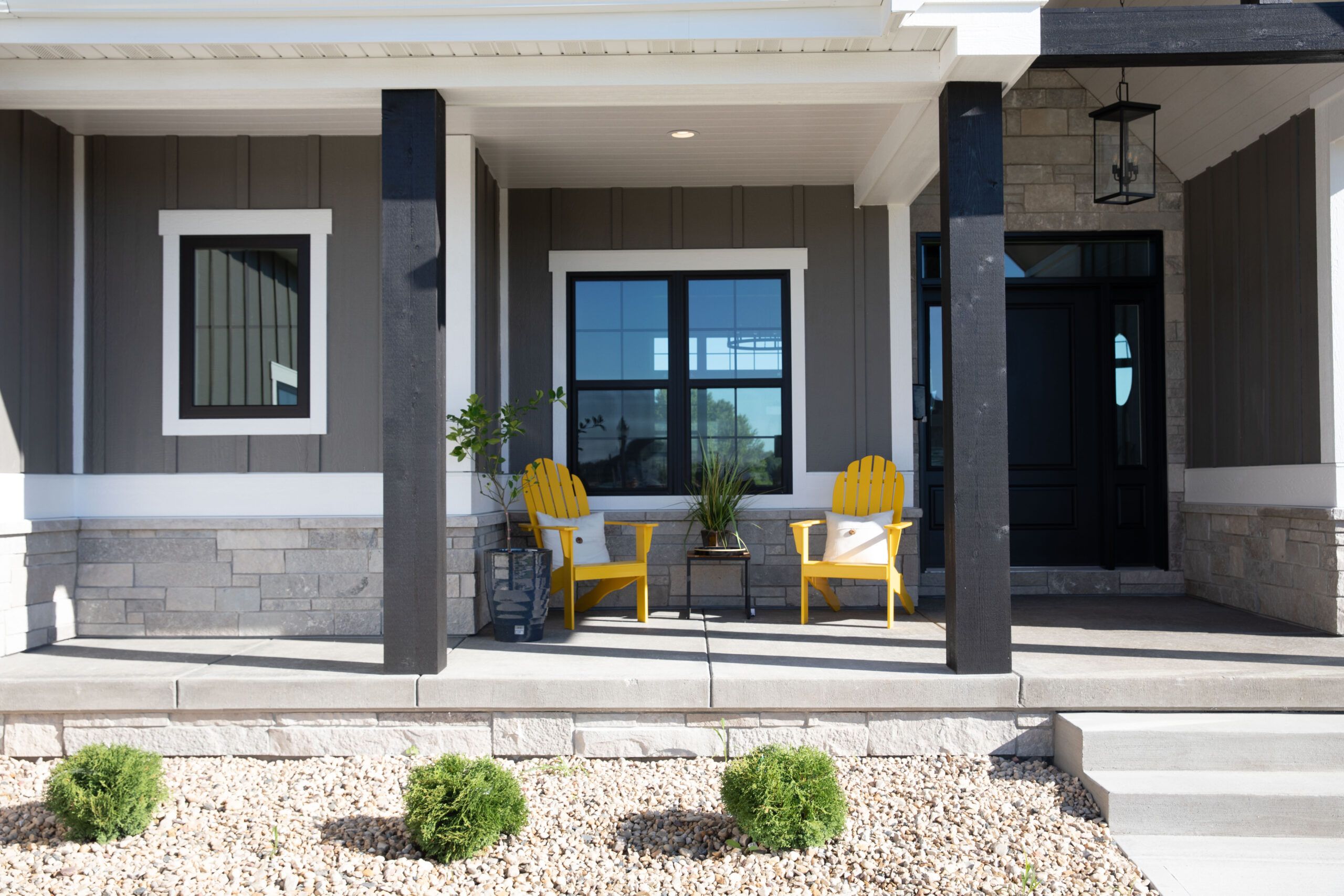
Stone siding or accents can add a touch of elegance and natural beauty to any home exterior. While it’s a classic choice for traditional homes, stone can also be incorporated into contemporary designs. Stone is available in a wide range of colors, shapes, and textures, making it adaptable to various architectural styles.
Remember to select a warm, cool, or neutral palette that will harmonize with the stone and create a cohesive overall appearance for your home. Using stone as an accent on areas like the foundation or entryway or mixing different stone sizes and shapes can help round out a dynamic, appealing look.
Pro tip: Explore color palettes and visualize the look you have in mind on your home with the LP SmartSide Home Visualizer.
Mixing Siding Styles
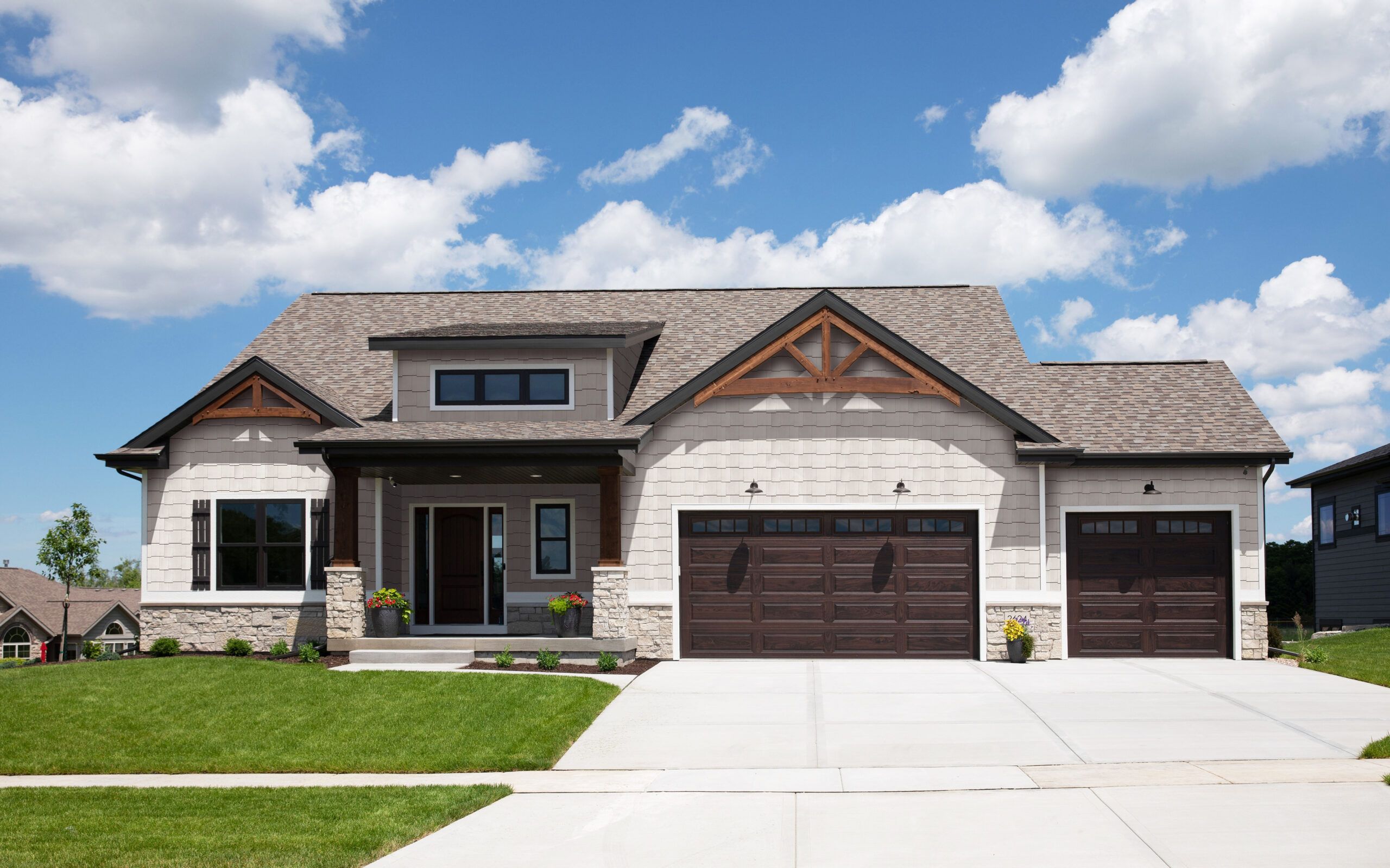
Adding visual interest to your home’s exterior often involves playing with multiple textures and styles. Cedar-textured shakes, for instance, offer a lively, natural look without the high maintenance requirements of real wood. These can be used on the entire home or as decorative accents to create an interesting contrast of textures.
These are some cool ways to incorporate shakes into your siding design:
- Use shakes on gables or upper stories to add dimension
- Create a feature wall with shakes to draw attention to a specific area
- Combine shakes with lap siding for a varied, dynamic exterior
Modern engineered wood siding products often come with advanced treatments that provide superior protection against water damage, termites, and fungal decay, ensuring long-lasting beauty and performance. Additionally, these treatments often include fire-resistant properties, making them a safer choice for homeowners concerned about their home’s safety.
Cabin Chic Siding
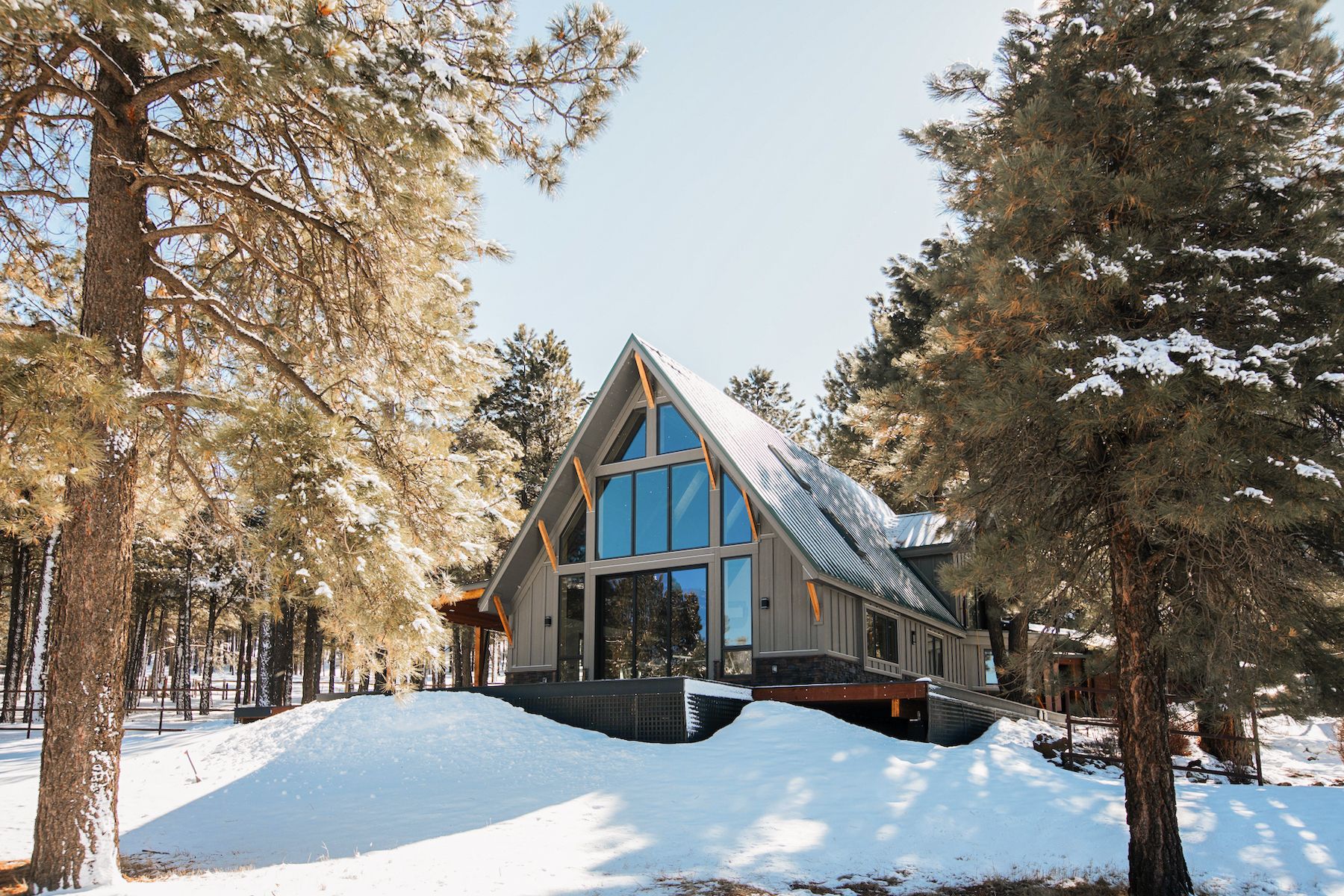
Shown here, smooth trim and siding pair for a board-and-batten look atop a stone foundation to create a rustic mountain cabin.
The rustic charm of a mountain cabin can be achieved through thoughtful siding choices. Board-and-batten siding, one of the earliest forms of siding used by settlers, is experiencing a resurgence in popularity. This style involves wide boards affixed to the framing, with narrow strips (battens) covering the seams.
To create a cabin-chic look, combine board-and-batten siding with stone accents for a rustic feel and use warm, earthy colors to evoke a cozy mountain atmosphere. You can also incorporate natural wood elements like exposed beams or a timber-frame porch
This style works well for both traditional and contemporary home designs, offering a timeless appeal that connects with nature. For an added touch, consider adding metal roofing with a patina finish to further enhance the rustic charm.
Coastal Siding Combos
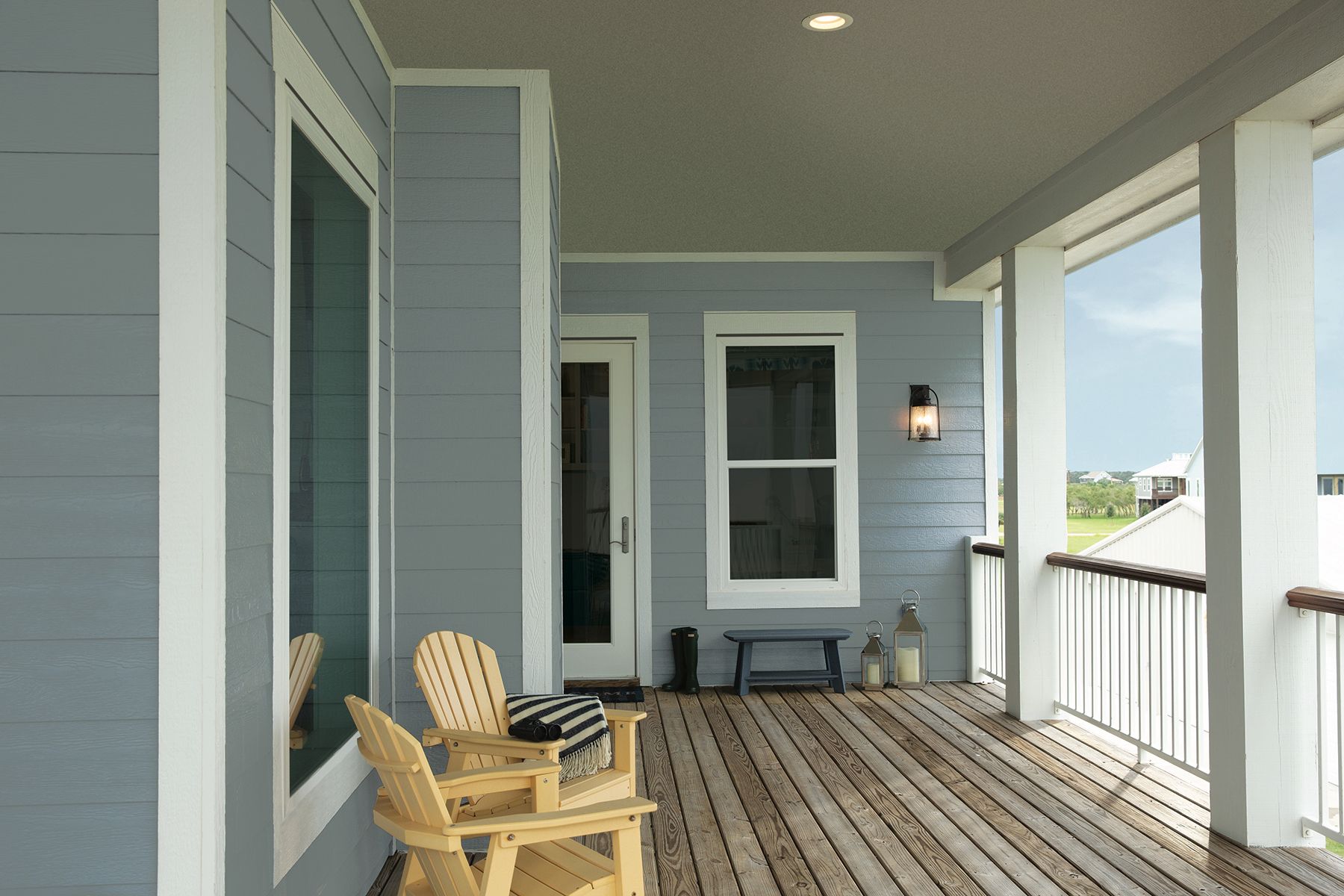
For homes in coastal areas or those seeking a beachy vibe, a combination of smooth siding in soft, ocean-inspired colors paired with white trim and natural wood accents can create a serene, coastal atmosphere. This look is not only aesthetically pleasing but can also be practical for seaside homes.
When designing a coastal-inspired exterior, choose colors that reflect the sea and sky, such as soft blues, sandy beiges, or misty grays. White trim can help create a crisp, clean look, while natural wood elements like cedar shakes or driftwood-inspired accents get that rustic appeal.
It’s important to select siding materials engineered to withstand coastal conditions, including high winds, salt spray, and intense sun exposure. Additionally, anti-corrosion treatments and moisture-resistant foundations can further protect your home from the challenging seaside environment.
Pro tip: Engineered to stand up to extreme weather, LP SmartSide Lap Siding is designed to withstand tough storms with wind gusts of up to 200 miles per hour, making it ideal for coastal homes like this one. Click here to see why you can count on LP SmartSide siding to stand up to severe weather.
How To Choose the Right Siding Material
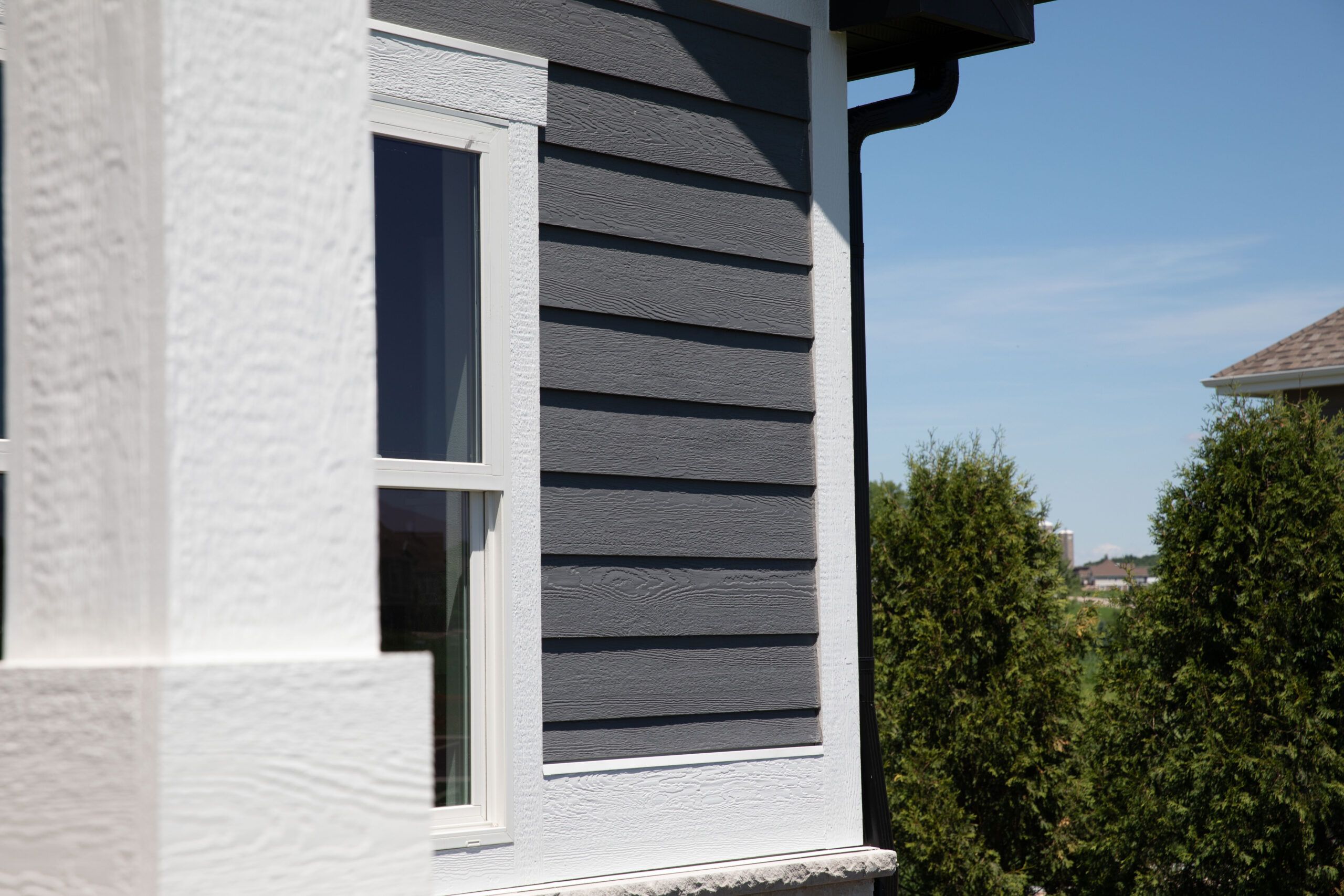
When it comes to siding materials, you’re making a long-term commitment and substantial monetary investment, so you’ll want to do your homework before you buy. Here are some things to consider.
Upkeep Requirements
If you’re the low-maintenance type, be sure to choose materials that don’t require more upkeep than you’re willing or able to commit to. Natural wood will require the most care. Because it is vulnerable to rot, insects, fire, and splitting, it should be monitored for maintenance, especially in extreme climates. Depending on the species, traditional wood siding typically needs more upkeep than engineered wood siding.
Cost
Materials and installation costs can vary greatly by region. Keep in mind that you get what you pay for—lightweight vinyl may be the most cost-effective to purchase and install, but it’s also susceptible to fading and vulnerable to high winds and extreme heat. Design intricacy will also affect labor costs.
Location
Wind, sun, cold, heat and moisture—any of these can adversely affect or shorten the lifespan of your siding. This is where LP SmartSide engineered wood products really shine. Treated to the core with the proprietary SmartGuard process, it helps your siding stand up to harsh weather in nearly any climate, offering protection from water damage, termites and fungal decay.
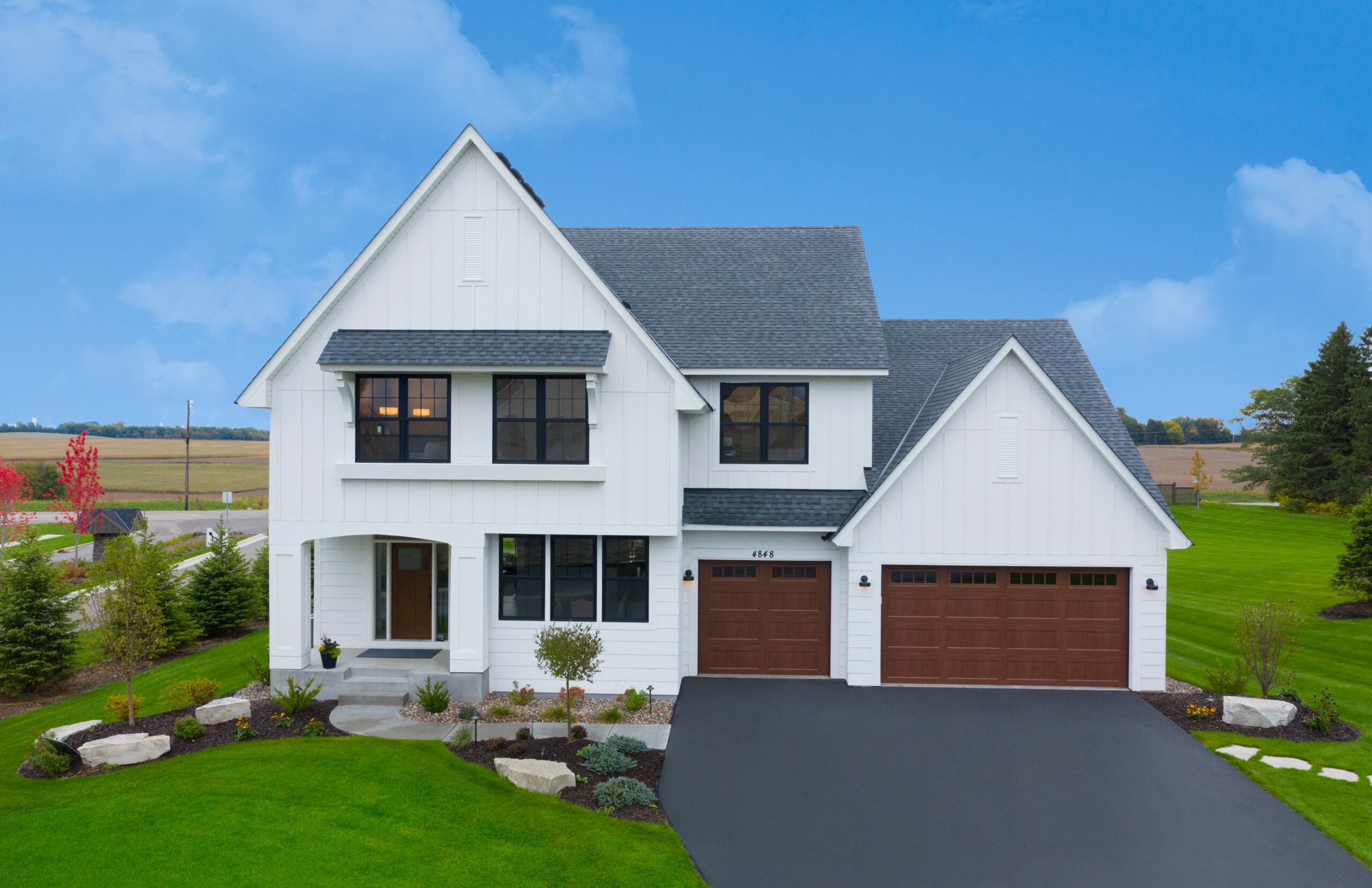
About Engineered Wood Siding
Advancements in siding technology have led to the development of engineered wood products that offer enhanced durability and performance. These products are designed to resist damage from impacts, extreme weather conditions, and pests while maintaining the aesthetic appeal of natural wood.
Here’s why we often recommend engineered wood siding:
- Superior resistance to moisture, fungal decay, and termites
- Ability to withstand extreme temperature fluctuations
- Impact resistance against hail and other debris
- Long-lasting finishes that require less maintenance
- Environmentally friendly manufacturing processes
When considering engineered wood siding, look for products that come with comprehensive warranties covering both materials and labor for added peace of mind. Furthermore, some engineered wood options integrate recycled materials, providing an eco-conscious choice that does not compromise on look or quality.
Explore ideas and visualize your home in a brand new style with the LP SmartSide Home Visualizer.
